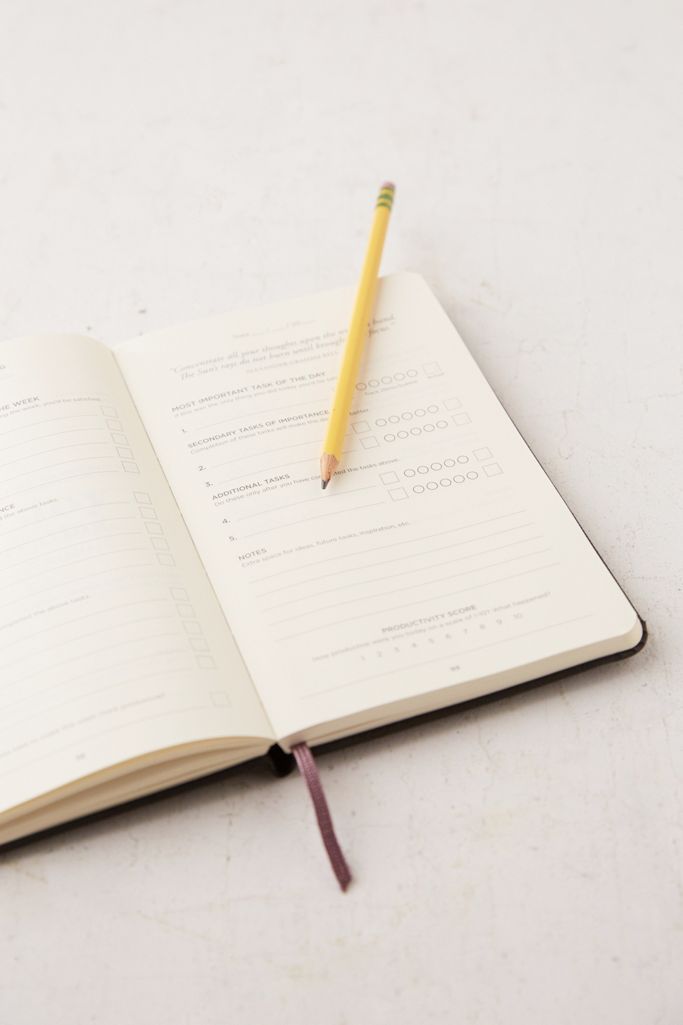
I bought a Productivity Planner at the beginning of this year and wow, it is a game changer. While I love my planner that holds my calendar, to do lists, notes, the productivity takes all of that, and teaches you how to organize it, prioritize and get things done in a productive and focused amount of time.
I bought the Productivity Planner by Intelligent Change. It’s just $26 and it’s completely based around two things:
-
-
- The pomodoro technique
- Ivy Lee’s prioritizing and productivity method
-
The one thing that I knew I needed to do before diving into using this planner, was read the front of the book that explains these three things I just listed. I am the queen of just doing and not reading the instructions beforehand haha. But the whole point of purchasing this was to be efficient, so this blog post is going to round up the first 30 pages of this planner so you don’t have to read them when you buy this planner! Let’s dive in…
By Intelligent Change
According to Ivy Lee, every evening before finishing work:
-
-
-
- Write down 3-5 things you plan to get done the next day
- Rank them from highest to lowest priority
- In the morning, start working on the task of highest priority
- Only move on to task #2 when you’ve completed task #1
- Repeat
-
-
deciding on the most important thing
Tim Ferris, New York Times bestselling author, says that he sucks at efficiency, so he has to find creative ways to get cope with his inefficiency and maximize efficacy, which he describes as “doing the right things”.
He listed out that the most important thing is usually the most uncomfortable thing or the thing that is the most procrastinated on? That’s how you decide on what to execute first. Ask yourself the question, “If this were the only I accomplished today, would I be satisfied with my day?”
when to use the productivity planner
Either at the beginning of each work day or the end of each work day. I prefer the end of each work day to review the day I just had and plan for the next day. It makes me feel like I’m ahead!
tips for a better to-do list
First and foremost, write it down! There is research associated with the accountability that writing something down has on someone’s ability to get it done.
Do you ever go to a restaurant and your waiter or waitress doesn’t write your order down and 9 times out of 10 they either come back and clarify, or they mess the order up? This is one of my biggest pet peeves! I was a waitress in college and I always wrote things down. It’s not a sign of weakness or inability, it’s a sign of strength and discipline.
Last, keep your list to at 5 items or fewer. It’s very difficult for humans to make decisions when they have too many choices. Hey, Cheescake Factory, take notes.
the art of writing your tasks
The way you write your task can dictate whether it will get done. Write concrete, actionable sentences that have no ambiguity. Procrastination is often the product of complicating the task in your head. Here is an example:
Your #1 task for the day is, “Prepare slides for Monday’s presentation.”
Think about it… what’s your first step in preparing these slides? Gather images? Find quotes? Create graphs? This task just got super complicated.
The #1 task for this should be, “Find necessary images.” Get specific af!!!
tips for executing your to-do list
Establish a distraction free zone. Here’s how:
-
-
- Phone on airplane mode.
- Disable all app notifications on your phone.
- Log out of all social media.
- Use apps like Freedom that will turn off certain websites or internet.
- Set the mood: put headphones on, light a candle, make some tea or coffee, etc.
- Interruptions: prevent them by letting people know that you’ll be occupied with work.
- Snacks: by your side with some tea or coffee. And WATER!!!! Always.
-
the pomodoro technique
-
-
- Decide on your most important task that will take you at least 25 minutes. Break down this task into smaller, actionable tasks that help you get your flow.
- Start a timer for 25 minutes and work on the first task. This time block is known as a Pomodoro. It is an indivisible unit of time; you can never do half of a pomodoro, only a full one. Do not work on anything else. If you get distracted, slowly bring yourself back. If you get pulled away completely, reset the timer and start it again fo 25 minutes.
- When the timer ends, celebrate! You’ve completed your task. Go for a stretch, drink of water, walk outside. You have 5 minutes to reset before then next Pomodoro.
-
Once you’ve mastered the 25 minute Pomodoro, experiment with longer time blocks.
how to use breaks effectively
Our performance depends on our abillity to recover quickly. Here is what to do and what no to do during your 5 minute breaks:
-
-
- DO: step outside for some fresh air
- DO: splash water on your face
- DO: get some tea or coffee
- DO: stretch and close your eyes
- DO NOT: check email or social media. You will never rebound back into a focused mindset.
-
time tracking
Time is truly your most precious commodity. Money will come and go, but oncme time is lost, it is lost forever.

This is a page in the productivity planner. Next to each number, you write your to-do list tasks in order of importance, or most uncomfortable. The first box to the right of the task is the Target box. Here, you list how many Pomodoros you estimate it will take you to complete the task. After your timer goes off at 25 minutes, fill in one circle. Reset the timer and continue until you complete the task. In the far right box, you fill in the Actual number of Pomodoros it took you to complete the task. Documenting this helps you plan for future tasks better.
I hope you guys enjoyed this and were inspired enough to purchase your own planner! I love mine and I think you will too. If you practice enough, you will eventually get in the habit of using the every day and night and you will see results!

